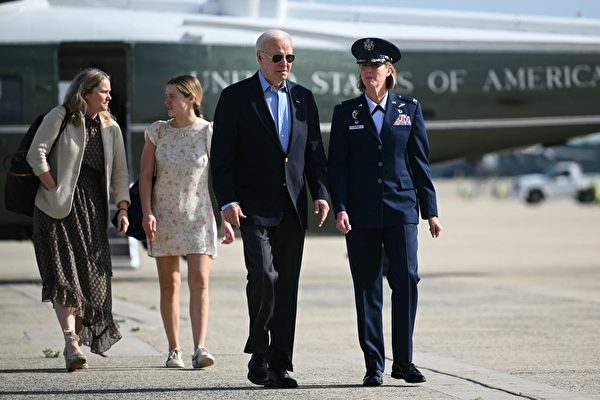US President Biden set off for Italy on Wednesday to meet with the leaders of the Group of Seven (G7), aiming to address three major issues.
Leaders from the world’s seven most developed democratic countries will discuss various challenges during the meeting from June 13 to 15, including the conflicts in Ukraine and the Middle East, trade imbalances with China, threats posed by artificial intelligence, and development challenges in Africa.
White House spokesperson John Kirby stated on Tuesday that the leaders will announce new sanctions and export controls targeting entities and networks that assist the Russian military in its operations in Ukraine.
“We will continue to raise the cost of Russia’s war machine,” Kirby said.
On Wednesday, the US expanded sanctions against Russia, targeting semiconductor chips and other goods, with a focus on third-party sellers in China.
The US has repeatedly warned against Chinese support for the Russian military. On April 26th, US Secretary of State Blinken met with senior Chinese officials in Beijing, directly stating that without China’s support, Russia’s attack on Ukraine would be difficult to sustain.
The US government has pointed out that China is providing Russia with materials usable for military purposes, including nitrocellulose used in ammunition manufacturing. China’s actions have contributed to the prolonged conflict in Ukraine.
Japan’s public broadcaster NHK reported on Wednesday that the Japanese government is considering new sanctions to prevent China from providing military supplies to Russia, including adding third-country entities suspected of involvement in supplying these materials to Russia to the export control list.
This would be the first time Japan imposes sanctions on Chinese companies concerning the situation in Ukraine. Once the sanctions are finalized, Prime Minister Kishida will present the proposal at the G7 summit.
Providing financial support for Ukraine will be a top priority at the G7 meeting.
US and European officials are eager to finalize solutions before the US elections in November.
The G7 and the EU are exploring ways to provide substantial advance loans to Ukraine using profits generated from assets in Russia that are inaccessible in the West to ensure financing for Kyiv in 2025.
Kirby stated, “We will announce new measures to release the value of frozen Russian sovereign assets for the benefit of Ukraine,” assisting them in recovering from the destruction caused by Putin’s military.
Biden will urge other G7 leaders to support an innovative plan that uses future interest on Russia’s central bank’s $281 billion in funds to provide a $50 billion loan to Ukraine.
Kirby added that Biden will meet with Ukrainian President Zelensky again and hold a joint press conference.
The G7 summit also focuses on China’s growing export power and the issue of industrial overcapacity. This was also a theme at last month’s G7 finance ministers meeting.
According to a draft statement seen by Reuters, on May 25th, finance ministers expressed concerns about China’s comprehensive use of non-market policies and practices, which harm workers, industries, and economic resilience.
A week earlier, the US announced significantly higher tariffs on a range of Chinese imports, including electric vehicle batteries, computer chips, and medical products.
At that time, the US had not urged its allies to take similar measures, but Treasury Secretary Janet Yellen expressed her hope for the G7 to strongly oppose China’s industrial and trade policies.
On the same day Biden traveled to Italy, the European Commission notified car manufacturers on Wednesday that after months of anti-subsidy investigations, they will impose additional tariffs of up to 38.1% on imported Chinese electric vehicles starting next month.
This move comes as European car manufacturers are facing the challenge of an influx of cheap Chinese electric vehicles entering the EU market.
Less than a month ago, the US raised tariffs on Chinese electric vehicles fourfold to 100%.

